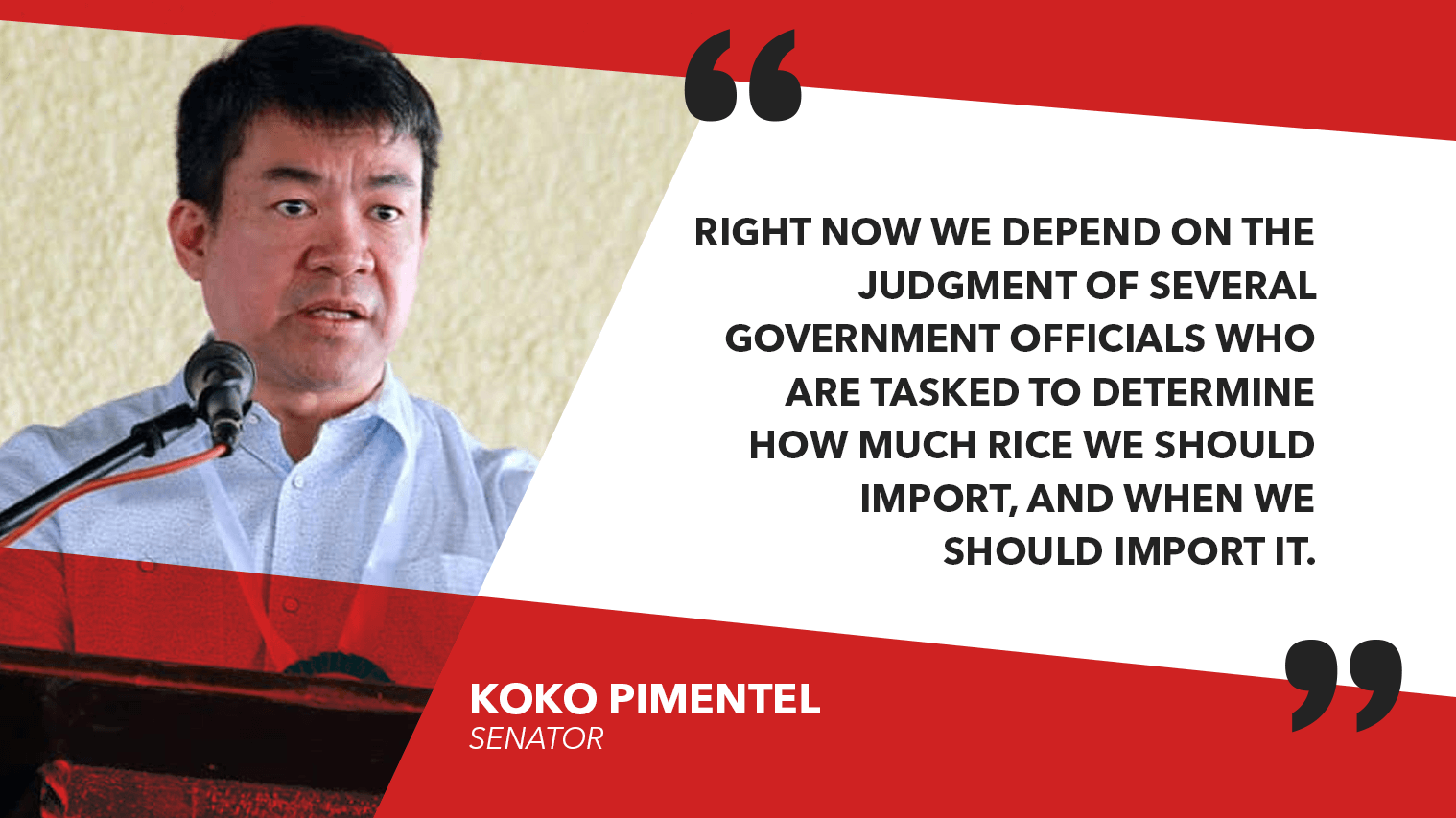As inflation for the month of August hit a nine-year high of 6.4 percent, Senate Trade and Commerce Committee Chairperson Koko Pimentel III on Thursday said the rice tarrification bill pending in the Senate was a “long-term solution” to the rice supply problems that have contributed to rising inflation rates.
On Wednesday, BSP Governor Nestor Espenilla Jr. identified rice as one of the culprits behind inflation, explaining that the “confluence of cost-push factors continue to drive consumer price inflation in August beyond the acceptable target range. Much of it has to do with food supply shocks. Rice in particular. These warrant more decisive non-monetary measures to fully address.”
Pimentel said that replacing the quantitative restrictions on rice importation with tariffs and allowing the private sector to import rice would prevent the rice supply fluctuations the country currently suffers because of missteps by the government-run National Food Authority (NFA) and manipulation by rice traders and smugglers who take advantage of supply issues to influence rice prices.
“The mandate appears simple enough, but so many factors prevent them from fulfilling their mandate properly.”
“Right now we depend on the judgment of several government officials who are tasked to determine how much rice we should import, and when we should import it,” said Pimentel, referring to the NFA Council, which is composed of the NFA Administrator and representatives from government agencies and institutions like the National Economic Development Authority, the BSP, and the Office of the President.
“The mandate appears simple enough, but so many factors prevent them from fulfilling their mandate properly. When they have disagreements and cannot get along, crucial policy decisions are delayed, and when this happens, it is consumers who literally pay the price––who literally pay higher prices for an important food staple like rice,” lamented the legislator from Mindanao.
“With the private sector involved in rice importation, businessmen will bring in rice when the market requires it, and will not when there is an abundant supply in the market.”
Pimentel said the belated action of the NFA Council to import rice to supply rice to areas with rice shortages in Mindanao and its failure to increase the buying price of palay are examples of “policy paralysis” that have rendered the body ineffective.
“With the private sector involved in rice importation, businessmen will bring in rice when the market requires it, and will not when there is an abundant supply in the market; they will try to find the best prices so they can sell their product at competitive rates while ensuring profits for themselves,” explained Pimentel.
“At the same time, the tariffs collected from importing rice will go directly to our farmers so we can help them produce rice efficiently and cheaply, thereby improving their capacity to compete and be profitable. This is a win-win measure for both farmer and consumer.”
In his this State of the Nation Address last July, President Rodrigo Duterte said rice tariffication was among the long-term solutions that the government is working on to lower inflation, to provide farmers with additional resources, and to reduce rice prices by up to P7 a kilo.
In his speech, the President said that the country needs “to switch from the current quota system in importing rice to a tariff system where rice can be imported more freely. I ask Congress to prioritize this crucial reform, which I have certified as urgent today.”


